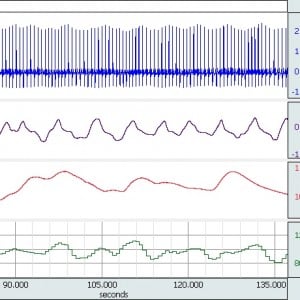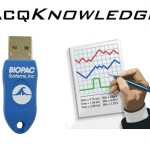Network Data Transfer Licenses
The Gold Standard for Better Science and Greater Discovery
Unlock & expand your MP160 system's functionality
Run your own analysis routines in parallel with AcqKnowledge
Network Data Transfer (NDT) is a real-time data transfer system that allows access to the data being acquired into a graph by AcqKnowledge for use in an external application; the computer used to run the AcqKnowledge process and the custom application may be the same computer.
- NDT is a basic method for allowing third party applications to tap into the data stream being generated by both the MP unit and AcqKnowledge during data acquisitions.
- NDT provides networking facilities that allow for integration into a distributed application environment.
- NDT provides basic control facilities to allow external applications to query and control the AcqKnowledge application state.
The NDT license unlocks Network Data Transfer functionality and adds the “Network Data Transfer Reference” to the Help menu.
The NDT system is split into two separate types of connections:
- Data connections deliver data from AcqKnowledge to external applications during acquisitions.
- Control connections are made from external applications to AcqKnowledge to query application state and adjust data connections.
Most of the settings for the network data transfer functionality are set by clients through control connections. Several settings for the AcqKnowledge server may be set directly in the AcqKnowledge “Network” Preferences included with NDT functionality and accessed from the Display menu (Windows) or from the AcqKnowledge menu (Mac OS X).
This licensed feature add-on requires current release AcqKnowledge software. Check version details in the software “About” dialog and see upgrade options if necessary.
Click to review NDT vs BHAPI to compare functionality for your protocol requirements.




Stay Connected